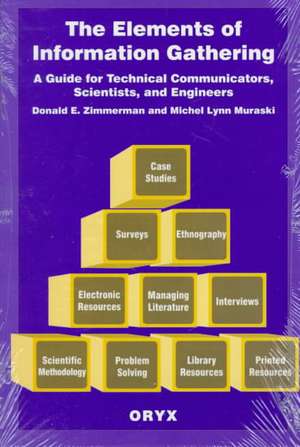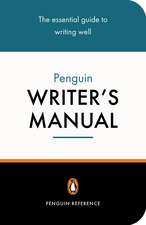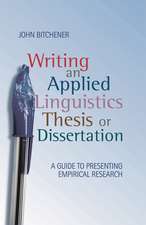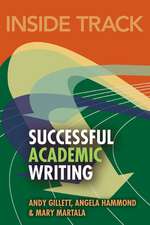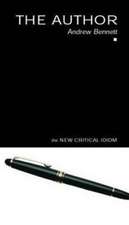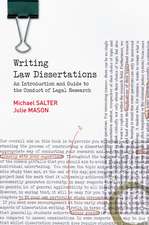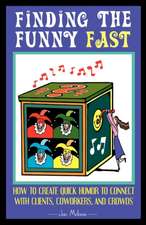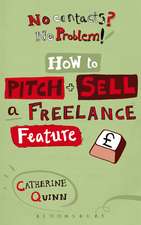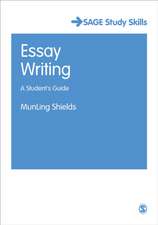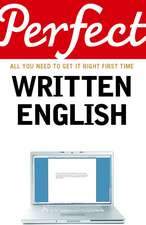The Elements of Information Gathering: A Guide for Technical Communicators, Scientists, and Engineers
Autor Michel Muraski, Donald E. Zimmermanen Limba Engleză Paperback – 3 dec 1994 – vârsta până la 17 ani
Preț: 188.34 lei
Preț vechi: 332.19 lei
-43% Nou
Puncte Express: 283
Preț estimativ în valută:
36.04€ • 37.72$ • 29.100£
36.04€ • 37.72$ • 29.100£
Carte tipărită la comandă
Livrare economică 31 martie-14 aprilie
Preluare comenzi: 021 569.72.76
Specificații
ISBN-13: 9780897748001
ISBN-10: 089774800X
Pagini: 256
Dimensiuni: 152 x 229 x 16 mm
Greutate: 0.46 kg
Ediția:New.
Editura: Bloomsbury Publishing
Colecția Greenwood
Locul publicării:New York, United States
ISBN-10: 089774800X
Pagini: 256
Dimensiuni: 152 x 229 x 16 mm
Greutate: 0.46 kg
Ediția:New.
Editura: Bloomsbury Publishing
Colecția Greenwood
Locul publicării:New York, United States
Notă biografică
Donald E. Zimmerman, PhD, is professor of technical journalism, Colorado State University, Fort Collins, Colorado, and coauthor of The Random House Guide to Technical & Scientific Communication. Michel Lynn Muraski is an instructor of business communication and professional writing at Colorado State University, Fort Collins, Colorado.
Recenzii
[T]his book's readability, breadth of coverage, clear presentation of information, and jargon-free manner make it suitable to journalists, other communication personnel, and undergraduates. Recommended.
[A] wonderful book, comprehensive yet compact, detailed while easy to read. . . . [T]his book has several excellent chapters on using the library. . . . It would be a good review for those in the library field. In addition, the tone of the chapters devoted to libraries is upbeat and respectful. . . . The book flows smoothly between three parts. . . . Librarians who are contemplating research based on this type of approach will find a valuable introduction to the major techniques available. . . . [A]ttractively produced . . . easy to find specific information. . . . It accomplishes this goal with a publication that provides a good overview of the subject without being boring or overly technical. It would be a good addition to many types of libraries, including hospital and academic health sciences libraries.
A comprehensive overview of effective ways to gather the information needed for various kinds of research. . . . Useful diagrams, tables, and an index are included. The book is recommmended for special and academic libraries.
[T]he book is easy to read. It is well designed with specific headings, subheadings and bulleted points that give an almost checklist quality to the book. Using this book as a guide, the inquiring mind will find and gather appropriate information, and therein lies the strength of the work.
[T]he sturdy techniques described here will get the average college-level researcher well into the master class.
[A] far-ranging and information work. . . . The chapters on ethnography/case studies are very well written and demonstrate the range of approaches available in social research. . . . In terms of the intended audiences - technical communicators, scientists, and engineers - the book will serve as a good introduction survey of alternatives for information gathering. . . . The book can be used most effectively in an introductory social research methods course, a course in technical or professional communications, or a course designed to develop information literacy skills. In such courses, faculty would provide the necessary guidance for students.
[A] wonderful book, comprehensive yet compact, detailed while easy to read. . . . [T]his book has several excellent chapters on using the library. . . . It would be a good review for those in the library field. In addition, the tone of the chapters devoted to libraries is upbeat and respectful. . . . The book flows smoothly between three parts. . . . Librarians who are contemplating research based on this type of approach will find a valuable introduction to the major techniques available. . . . [A]ttractively produced . . . easy to find specific information. . . . It accomplishes this goal with a publication that provides a good overview of the subject without being boring or overly technical. It would be a good addition to many types of libraries, including hospital and academic health sciences libraries.
A comprehensive overview of effective ways to gather the information needed for various kinds of research. . . . Useful diagrams, tables, and an index are included. The book is recommmended for special and academic libraries.
[T]he book is easy to read. It is well designed with specific headings, subheadings and bulleted points that give an almost checklist quality to the book. Using this book as a guide, the inquiring mind will find and gather appropriate information, and therein lies the strength of the work.
[T]he sturdy techniques described here will get the average college-level researcher well into the master class.
[A] far-ranging and information work. . . . The chapters on ethnography/case studies are very well written and demonstrate the range of approaches available in social research. . . . In terms of the intended audiences - technical communicators, scientists, and engineers - the book will serve as a good introduction survey of alternatives for information gathering. . . . The book can be used most effectively in an introductory social research methods course, a course in technical or professional communications, or a course designed to develop information literacy skills. In such courses, faculty would provide the necessary guidance for students.
